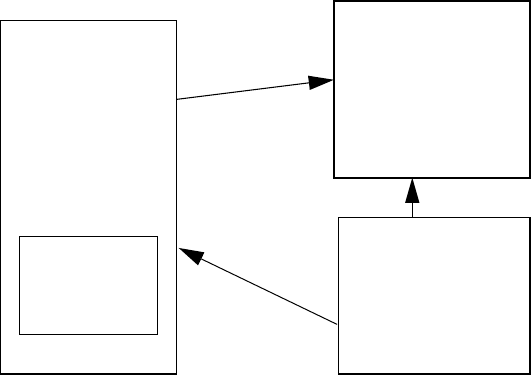HP CIFS Server Administrator Guide Version A.03.01.03 (5900-2006, October 2011)
Table Of Contents
- HP CIFS Server Administrator Guide Version A.03.01.03
- Contents
- About this document
- 1 Introduction to the HP CIFS Server
- 2 Installing and configuring HP CIFS Server
- HP CIFS Server requirements and limitations
- Step 1: Installing HP CIFS Server software
- Step 2: Running the configuration script
- Step 3: Modify the configuration
- Step 4: Starting HP CIFS Server
- Other Samba configuration issues
- 3 Managing HP-UX file access permissions from Windows NT/XP/2000/Vista/Windows 7
- Introduction
- UNIX file permissions and POSIX ACLs
- Using the Windows NT Explorer GUI to create ACLs
- Using the Windows Vista Explorer GUI to create ACLs
- POSIX ACLs and Windows 2000, Windows XP, Windows Vista, and Windows 7 clients
- HP CIFS Server Directory ACLs and Windows 2000, Windows XP, Windows Vista, and Windows 7 clients
- In conclusion
- 4 Windows style domains
- Introduction
- Configure HP CIFS Server as a PDC
- Configure HP CIFS Server as a BDC
- Domain member server
- Create the Machine Trust Accounts
- Configure domain users
- Join a Windows client to a Samba domain
- Roaming profiles
- Configuring user logon scripts
- Home drive mapping support
- Trust relationships
- 5 Windows 2003 and Windows 2008 domains
- 6 LDAP integration support
- Overview
- Network environments
- Summary of installing and configuring
- Installing and configuring your Directory Server
- Installing LDAP-UX Client Services on an HP CIFS Server
- Configuring the LDAP-UX Client Services
- Enabling Secure Sockets Layer (SSL)
- Extending the Samba subschema into your Directory Server
- Migrating your data to the Directory Server
- Configuring the HP CIFS Server
- Creating Samba users in directory
- Management tools
- 7 Winbind support
- 8 Kerberos support
- 9 HP CIFS deployment models
- Introduction
- Samba Domain Model
- Windows Domain Model
- Unified Domain Model
- 10 Securing HP CIFS Server
- 11 Configuring HA HP CIFS
- 12 HP-UX configuration for HP CIFS
- 13 Tool reference
- Glossary
- Index

Figure 32 An Example of the Unified Domain
Windows
ADS DC/SFU
“hpntcdn”
Realm:
CIFSW2KSFU
.ORG.HP.COM
Windows
and UNIX
users
Windows
NT/WINS
Server
IP address
“1.13.112.166”
HP CIFS
Member Server
“hostD”
A sample smb.conf file for an HP CIFS Member Server
The following is a sample Samba configuration File, /etc/smb.conf, used for an HP CIFS Server
machine hostD acting as an ADS member server in the sample Unified Domain Model shown in
Figure 9-10:
######################################################
#
# An sample smb.conf file for an HP CIFS ADS member server
#
# Global Parameters
[global]
workgroup = CIFSW2KSFU # Domain Name
server string = CIFS Server as a domain member
realm = CIFSW2KSFU.ORG.HP.COM
security = ADS
netbios name = hostD
security = ads
local master = no
wins server = 1.12.112.166
log fie = /var/opt/samba/log.%m
short preserve case = no
dos filetime resolution = yes
read only = no
#
[homes]
comment = Home Directory
browseable = No
#
[tmp]
comment = temporary file space
path = /tmp
A sample /etc/krb5.conf file
On your HP CIFS Server acting as a ADS member server, you need to create the Kerberos
configuration file, /etc/krb5.conf, which specifies the name of the realm, the location of a
Key Distribution Center (KDC) server and the logging file names.
The following is a sample /etc/krb5.conf which has the realm CIFSW2KSFU.ORG.HP.COM,
and the machine hpntcdn.org.hp.comas a KDC:
Unified Domain Model 131










